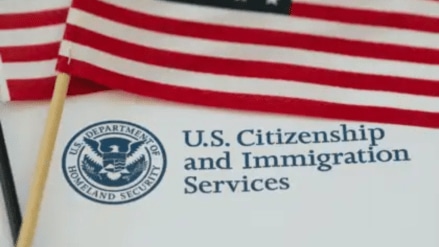The US Citizenship and Immigration Services issued a strict warning Friday, targeting foreign nationals who may have entered the country on an employment visa and violated immigration laws. Offering a glimpse of the final endgame resulting in legal consequences, the USCIS even cited a real-life example of an individual who was supposed to be working in Florida on an H2A visa but failed to report to his employer.
US’ strict warning for employment visa holders
“Aliens who enter the US on an employment visa but fail to report to their designated employer or leave the job without returning to their home country are in violation of immigration laws and will face legal consequences,” said the official USCIS page on X, formerly Twitter.
Authorities then divulged that a person on an H2A visa did not report back to their employer in Florida and was eventually found by the officials in Fresno, a city in California. As of now, the US Immigration and Customs Enforcement (ICE) has taken over the case.
Given ICE’s streak when it comes to such instances, the said individual may even end up facing deportation down the line.
“You are responsible for following the terms of your visa. If you violate them, you can be removed from the US,” read the photo card attached to the tweet.
Aliens who enter the U.S. on an employment visa but fail to report to their designated employer or leave the job without returning to their home country are in violation of immigration laws and will face legal consequences.
— USCIS (@USCIS) August 7, 2025
This was the case for an individual who was supposed to… pic.twitter.com/CptVzZiIfD
What is the H2A visa?
The H-2A visa is meant for temporary agricultural workers. According to the official USCIS website, this program allows American employers or agents “who meet specific regulatory requirements to bring foreign nationals” to the country and enlist them for temporary agricultural jobs. Those employing such individuals must file Form I-129, Petition for a Nonimmigrant Worker, on a prospective employee’s behalf.
However, to qualify for the H-2A classification, the petitioner filing the application must ensure that the job they are offering is a temporary or seasonal one. Furthermore, the employers must also have proof to back that there are not enough US workers who may be “able, willing, qualified, and available to do the temporary work.”
The official website also notes the petitioner must “show that employing H-2A workers will not adversely affect the wages and working conditions of similarly employed US workers.”
As for the period of stay protocol, USCIS says it “may grant H-2A classification for up to the period of time authorized on the temporary labor certification.” The employment visa program classification can be extended in increments of up to 1 year each. However, each extension request must come with a new, valid temporary labour certification covering the requested time.
The maximum period of stay allocated to a person on this work visa is 3 years. Anyone who has been on the H-2A program for these many years must ultimately leave and remain outside the US for at least 60 days (without interruption) before going after the H-2A nonimmigrant readmission status.
“A qualifying absence from the United States for an uninterrupted period of at least 60 days at any time will result in the H-2A worker becoming eligible for a new 3-year maximum period of H-2A stay,” the website adds. “To qualify, the petitioner must provide evidence documenting the worker’s relevant absence(s) from the United States, such as, but not limited to, arrival and departure records, copies of tax returns, and records of employment abroad.”
Family of H-2A workers (spouse and unmarried children under 21 years of age) may seek admission to the US in the H-4 dependent immigration classification. These particular individuals are then not eligible to be employed in the country as long as their H-4 status is valid.
